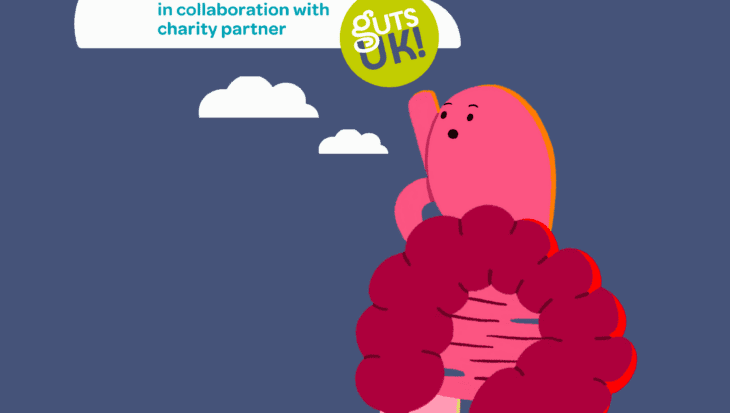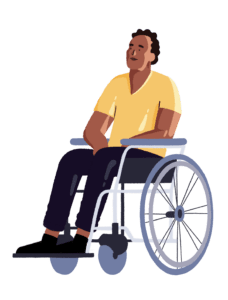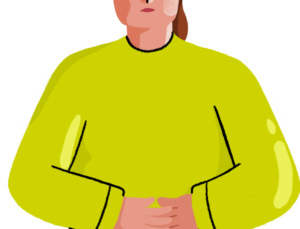Flushing away the poo taboo, together!
What is it that stops us from talking about our digestive health, or poo, as openly as we’d talk about having a cold, a headache or back pain? After all, our poo is an indication...
7th March 2024

16th April 2024
You might have noticed supply issues with pancreatic enzyme replacement therapy (PERT), sometimes also called pancreatin. This situation has progressed. It has now caused some people who need PERT to run out of it. These medicines are supplied under the brand names Creon®, Nutrizym®, and Pancrex®. This advice is taken from a position paper written by dietitians and supported by doctors and charities who support people needing PERT. You can find a copy of this here: Position Statement: Pert Shortage | Pancreatic Society of Great Britain and Ireland (psgbi.org). If you would like a printed copy, you can e-mail us: info@gutscharity.org.uk or call us: 020 7486 0341. This information will help you to reduce the impact of the shortage on your symptoms and quality of life.

Doctors prescribe PERT. It helps digestion in people with pancreatic exocrine insufficiency (PEI). It is most often needed due to pancreatitis, pancreatic cancer, and cystic fibrosis (CF). Several other medical situations may cause PEI. These are called secondary causes.
These include:
The types of symptoms and their severity will vary from person to person. Symptoms do not depend on the cause of the insufficiency.
Symptoms of untreated PEI may include:
These symptoms are usually treated by taking PERT. They will come back if you can’t take enough. Not having these symptoms does not mean you do not have PEI. Some people have PEI without symptoms.

The advice in this leaflet may be updated. It will be updated if there is more guidance. Also, if there is more experience of managing PEI without enough PERT.
Please note the advice in this document is designed for adults with PEI. Specialist advice should be sought for children with PEI.
People with cystic fibrosis (CF) will be under the care of a specialist centre. The Cystic Fibrosis Trust have produced specific information for people with CF. Some of the information in this leaflet is not suitable for people with CF. Please contact your specialist team for advice.

The advice for patients has been split into 4 stages.
Stage 1 – There are supplies available.
Stage 2 – There are limited supplies available.
Stage 3 – There are not enough supplies, and you have abdominal (belly) symptoms. (See above)
Stage 4 – There are no supplies available.
PERT is still being delivered regularly into the United Kingdom. So, people will move backwards and forwards between these stages. It is not expected for people to completely run out of PERT for long. So, if we do have to use the advice in phase 3 or 4, it is thought that this will only be for a short period of time.
Whilst PERT supply issues continue, please do not stockpile them. Stockpiling will further drive the shortage.
The Department of Health and Social Care has recommended that only 1-month supply is issued at a time. This is to try and regulate supplies. So, if you currently receive 2-3 months of your PERT at a time, you will need to collect your prescriptions more often. If you pay for your prescription, consider applying for a pre-payment certificate here. This will help to reduce the cost of prescription charges.

You should place your prescription requests earlier. Do so 2 weeks in advance. This is to give the local pharmacist time to source your medication.
If what you usually take is not available, you may need a change in your repeat prescriptions to another brand. Three brands of PERT are available in the UK. They are Creon®, Nutrizym®, and Pancrex®.
Remember to store your PERT appropriately. All PERT should be stored below 25 degrees. Some brands recommend refrigeration, check the packaging. If PERT gets too hot it does not work properly, this damage cannot be reversed.
Taking the PERT throughout the meal is the best way. Rather than all at the start/ middle/ end of the meal. This is because it improves how well it digests what you are eating.
Ensure that you use your PERT before it goes out of date. If you store PERT in different places (i.e. at work), rotate your supplies to prevent waste.
Table 1 shows how each enzyme product compares to others:
| Table 1: Conversion charts (2) Creon® 25,000 Dose | Equivalent in Nutrizym® 22 | Equivalent in Creon® 10,000 | Equivalent in Pancrex® 340mg (8,000 units lipase) | Equivalent in Pancrex® 125mg (2,950 units lipase) | Equivalent in Creon® Micro* | Pancrex® V powder* |
| 1 x Creon 25,000 | 1 x Nutrizym 22 | 3 x Creon 10,000 | 3 x Pancrex 8,000 | 8 x Pancrex 2,950 | 5 scoops Creon Micro | ½ x 2.5ml spoon |
| 2 x Creon 25,000 | 2 x Nutrizym 22 | 5 x Creon 10,000 | 6 x Pancrex 8,000 | 16 x Pancrex 2,950 | 10 scoops Creon Micro | 1 x 2.5ml spoon |
| 3 x Creon 25,000 | 3 x Nutrizym 22 | 8 x Creon 10,000 | 9 x Pancrex 8,000 | 24 x Pancrex 2,950 | 15 scoops Creon Micro | 1½ x 2.5ml spoon |
| 4 x Creon 25,000 | 4 x Nutrizym 22 | 10 x Creon 10,000 | 12 x Pancrex 8,000 | 32 x Pancrex 2,950 | 20 scoops Creon Micro | 2 x 2.5ml spoon |
| 5 x Creon 25,000 | 5 x Nutrizym 22 | 13 x Creon 10,000 | 15 x Pancrex 8,000 | 40 x Pancrex 2,950 | 25 scoops Creon Micro | 2 ½ x 2.5ml spoon |
| 6 x Creon 25,000 | 6 x Nutrizym 22 | 15 x Creon 10,000 | 18 x Pancrex 8,000 | 48 x Pancrex 2,950 | 30 scoops Creon Micro | 3 x 2.5ml spoon |

It may be most practical to combine medications. For instance, if the prescription is Creon® 25,000 x 3 with meals and 2 with snacks. These are all equal doses, using the different products:
Creon® 25,000 x 3 with meals + Creon® 10,000 x 5, with snacks.
or
Creon® 10,000 x 8 with meals + Creon® 10,000 x 5, with snacks.
or
Creon® 10,000 x 8 with meals, + Pancrex® 340mg x 6, with snacks.
or
Nutrizym® 22 x 3 with meals, + Pancrex® 340mg x 6, with snacks.
or
Pancrex® 340mg x 10 with a meal, + Pancrex® 125mg x 16, with a snack.
The first steps if supplies are limited, meaning you have some PERT but less than your usual amount:

If you do not take vitamins and minerals, it is recommended that you take a calcium and vitamin D supplement. Check the label. It should have 800 iu Vitamin D and at least 500mg Calcium. Also, take a multi-vitamin and mineral supplement during this time. For example:
Please make sure these contain both vitamins and minerals.
People with CF should keep taking their vitamins and minerals. They should discuss any concerns with their CF specialist dietitian.
Please contact your dietitian, nurse, or doctor if you struggle with malabsorption or keep losing weight.

If you have diabetes:
Check your blood glucose levels regularly. They should be checked:
If you take less enzymes with your food, you are likely to absorb less carbohydrate from it. Therefore, you may need to reduce the amount of quick-acting or mixed insulin you inject to prevent a hypo*.
*A hypo is when your blood glucose level goes below 4mmol/l, typical symptoms include sweating, shaking, blurred vision, confusion, palpitations. Always keep hypo treatment on you.
You can find more information on recognising and treating a hypo from your diabetes team or here. If you would like a printed copy of this information e-mail: info@gutscharity.org.uk or call us: 020 7486 0341. You are only at risk of a hypo if you take medication that lower your blood glucose levels. It is not usually possible to have a hypo if you are not taking insulin or gliclazide.
If you have a continuous glucose monitor, ensure you have the hypoglycaemic alarm set. If you are having more hypos than usual, you may need to contact your diabetes team for advice on adjusting your insulin doses.
This section is for people who do not have enough PERT and develop symptoms, such as diarrhoea, severe bloating, or a sudden need to have a bowel movement. Check the list of symptoms on this page, above. Here are some other steps to try in addition to those above:

If any one or more of these circumstances occur:

If you are under the care of a hospital team, contact them. See if they have enough supplies to issue a prescription for you. You will have to travel to the hospital to collect these if they have some available.
Tell your pharmacist that you have completely run out. This is so your supplies can be prioritised if possible.
Try not to worry. Supplies are regularly coming into the country, so this should be a short-term issue.

Contact your GP. Ask for a prescription for a peptide nutritional drink. (Vital 1.5kcal® or Peptisip Energy HP®). Show them this leaflet. Or show them the position statement. Both could help. If you are known to a dietitian, they can be contacted too. But, because of the huge increase in workload from this PERT shortage, you are likely to get them more quickly if you go directly to your GP. These drinks can be used instead of meals until you have your PERT again. If you do not have diabetes, you can keep having sugary foods and drinks. Table 2 shows how many supplement drinks you should take if you do not have any PERT at all.
Table 2 shows the recommended doses for peptide-based nutritional supplement drinks if you are unable to eat any food due to your malabsorption symptoms.
| Body weight | Supplements needed per day
(Vital 1.5kcal® or Peptisip Energy HP®) |
| Below 40kg (6st 4lb) | Contact a dietitian |
| 40 – 50kg (6st 4lb- 7st 12lb) | 4 x 200ml bottles = 1200kcal |
| 50 – 60kg (7st 12lb – 9st 6lb) | 5 x 200ml bottles = 1500kcal |
| 60 – 70kg (9st 6lb – 11st) | 6 x 200ml bottles = 1800kcal |
| 70 – 80kg (11st – 12st 8lb) | 7 x 200ml bottles = 2100kcal |
| 80 – 90kg (12st 8lb – 14st 2lb) | 8 x 200ml bottles = 2400kcal |
| Over 90kg (14st 2lb) | Contact a dietitian |
This may underestimate your needs. If you lose weight or are very active, add one more bottle per day. If you gain weight and were not intending to – reduce by 1 bottle per day.
They do not come in many flavours. But you can add milkshake mixes or coffee syrups to expand the flavours. Serve them chilled. Or freeze them into ice lolly moulds or ice cube trays for more variety.
Table 3 shows high fat foods and their lower fat alternatives.
| Reduce your portion sizes of these: | Have these instead: | |
| Fats and oils | Butter, lard, Ghee, Margarine, cooking oils | Small portions of low-fat spreads
Use spray on cooking oils if needed |
| Dairy products | Full fat milk / yoghurt
Cream Crème Fraiche Cheese |
Semi-skimmed or skimmed milk.
Low fat yoghurts Use small amounts of grated cheese instead of slices of cheese – choose stronger cheeses to maximise taste. To increase your protein intake, make skimmed milk powder up using skimmed milk. Use it in place of milk throughout the day |
| Meat and Fish | Fried foods or foods cooked in batter.
Skins / visible fat on meat Tinned fish, tinned in oil |
Meat and fish cooked without added oil.
Tinned fish, tinned in spring water / brine |
| Plant based protein sources | Nut butters | Pulses (e.g. lentils, chickpeas, beans (note portion sizes in table 2)
Quorn / Tofu – up to 100g |
| Fruit & vegetables | No restrictions for low fat, see Table 4 for fibre suggestions | |
| Carbohydrate based foods | Croissants, pastries
Chips / Fried Roast potatoes |
Bread, Breakfast cereals
Potatoes, rice, pasta, cooked without added fat |
| Sauces / Condiments | Cheese based sauces
Creamy sauces (bearnaise, hollandaise etc.,) Large portions of mayonnaise |
Tomato based sauces, gravy, mustard, tomato ketchup, soy sauce, mint jelly, vinegar, or low-fat salad dressings |
Table 4 shows the fibre content of high fibre foods. Aim for less than 40g fibre per day.
| Very high fibre foods | High fibre foods | ||||
| Food | Portion providing 10g fibre | Food | Portion providing 5g fibre | Food | Portion providing 5g fibre |
| All bran® | 40g | Whole wheat pitta | 1 large | Weetabix® | 2 biscuits |
| Brown pasta | 250g (cooked) | Rye based crackers (i.e. Ryvita®) | 4 biscuits | Shredded wheat® | 2 biscuits |
| Baked Beans | 300g | Branflakes®/ Sultana Bran®, Fruit n/Fibre® | 30g bowl | Porridge / Readybrek® | Large bowl (60g oats) |
| Dried apricots / prunes | 120g | Jacket potato with skin | 1 medium | Pasta (white) | 250g (cooked) |
| Nuts and seeds | 150g | Wholemeal spaghetti | 150g (cooked) | Wholemeal bread | 100g |
| Dried lentils / chickpeas /Mung beans | 100g (weight before cooking) | Baked beans | 150g | Quorn® | 75g |
| Dried soya beans / red kidney beans | 70g (weight before cooking) | Green beans / peas (fresh or frozen) | 120g | Spinach | 5 tablespoons |
| Desiccated coconut | 70g | Sweetcorn | 7 tablespoons | Avocado pear | 1 whole fruit |

If you have a PEG, RIG or NG (nasogastric) feeding tube, you could take your PERT using a powdered source. For example, Pancrex® V powder. You would take it through the tube. These can be dissolved in water and flushed down the tube, but this must be done at the time you eat. This does not work with a jejunostomy or naso-jejunal tube. The enzymes will not mix with your food. If you have a feeding tube, discuss this choice with your dietitian
Here at Guts UK charity, we support people with pancreatitis and pancreatic exocrine insufficiency. This includes pancreatic exocrine insufficiency caused by stomach surgery and diabetes.
Contact by phone: 020 7486 0341 (9am-5pm Monday – Friday)
Contact by e-mail: info@gutscharity.org.uk

Contact by phone – Support Line: 0808 801 0707 (9am – 4pm Monday, Tuesday, Thursday and Friday and 10am-4pm Wednesday)
Contact by e-mail: nurse@pancreaticcancer.org.uk
Contact by phone: 0300 373 1000 or 020 3795 2184 (10am – 4pm Monday – Friday)
Contact by e-mail: helpline@cysticfibrosis.org.uk
Chat on Facebook, Twitter or Instagram.
Message via WhatsApp: 07361 582053
Contact by phone – helpline: 0800 434 6476 (10am – 4pm Tuesday – Thursday)
Contact by form: on the website
What is it that stops us from talking about our digestive health, or poo, as openly as we’d talk about having a cold, a headache or back pain? After all, our poo is an indication...
7th March 2024

We’re delighted to take our free ‘Science of Digestion’ event to Hull next month (Tuesday 14th May 2024!) This is your opportunity to learn all about the hidden world inside your guts and the latest...
22nd April 2024

What is a faecal-immunochemical test (FIT test)? You may know that the NHS offers national bowel cancer screening checks, by sending you a home kit. This home kit requires you to collect a small sample...
3rd April 2024

By submitting this form, you are consenting to Guts UK contacting you by email as detailed above. To make any changes to your preferences you can email us on info@gutscharity.org.uk or by calling us on 020 7486 0341. Your details are safe with us. Please read our Privacy Policy for more details.